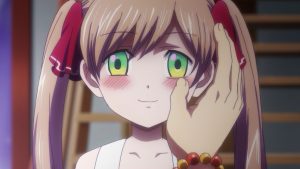 I won’t bury the lead – this finale was great. It was everything that makes Kai Byoui Ramune a wonderful series distilled into one episode, and it brought things to a satisfying conclusion that was totally consistent with the themes of the series. But that was among the least surprising events of the season – this series (and Kemono Jihen) has been a marvel of consistency from start to finish. To be a really good show is enough, of course, but to be as structurally elegant as Kai Byoui Ramune is a surefire way to take things to the next level.
I won’t bury the lead – this finale was great. It was everything that makes Kai Byoui Ramune a wonderful series distilled into one episode, and it brought things to a satisfying conclusion that was totally consistent with the themes of the series. But that was among the least surprising events of the season – this series (and Kemono Jihen) has been a marvel of consistency from start to finish. To be a really good show is enough, of course, but to be as structurally elegant as Kai Byoui Ramune is a surefire way to take things to the next level.
 What I’m left thinking about in the aftermath of this gem is sleepers. Specifically, why they satisfy so deeply, and what quality they have which makes them sleepers in the first place. Picking out sleepers may in fact be more fun for me than anything else in blogging anime, and I feel quite proud of my record. Ramune, Udon no Kuni, and Miira no Kaikata are ones that come to mind off the top of my head. All series with which I had no prior experience, none from elite studios or featuring legendary directors. Yet I knew, somehow. And the fact that I don’t really understand how I knew is the most interesting aspect to me.
What I’m left thinking about in the aftermath of this gem is sleepers. Specifically, why they satisfy so deeply, and what quality they have which makes them sleepers in the first place. Picking out sleepers may in fact be more fun for me than anything else in blogging anime, and I feel quite proud of my record. Ramune, Udon no Kuni, and Miira no Kaikata are ones that come to mind off the top of my head. All series with which I had no prior experience, none from elite studios or featuring legendary directors. Yet I knew, somehow. And the fact that I don’t really understand how I knew is the most interesting aspect to me.
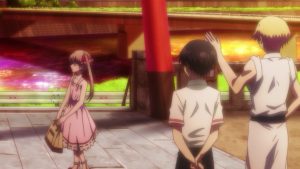 In point of fact it’s Udon no Kuni that’s most relevant to this series, I think, not least because they’re both sleepers which exploded past my expectations and became true favorites. More, they’re the two anime that more than any other for me represent one-cour manga adaptations that succeed in the format. Udon no Kuni’s source material was longer and ongoing of course (Ramune just ended, though it did have a “false start end” once already), but they both played as if they were written to be perfectly told in 12 episodes. I love both shows and would love to have more, but neither leave any feelings of incompleteness. If they’re all we get (as they surely are) they were satisfying in every way.
In point of fact it’s Udon no Kuni that’s most relevant to this series, I think, not least because they’re both sleepers which exploded past my expectations and became true favorites. More, they’re the two anime that more than any other for me represent one-cour manga adaptations that succeed in the format. Udon no Kuni’s source material was longer and ongoing of course (Ramune just ended, though it did have a “false start end” once already), but they both played as if they were written to be perfectly told in 12 episodes. I love both shows and would love to have more, but neither leave any feelings of incompleteness. If they’re all we get (as they surely are) they were satisfying in every way.
 One thing Kai Byoui Ramune has been from the beginning is thematically ambitious, and this finale was no exception. This is very smart material that respects its characters, as witness the role even the supporting cast continue to play after their stories are finished. Here we again meet Koto, the mayo-tears girl, who’s doing just fine but melancholy about not needing to see the doctor anymore. Ramune-sensei initially tells her that she can come by any time she likes, but then recalls the verbal thrashing he took from Momiji-san about keeping his distance from his patients and pushes her away.
One thing Kai Byoui Ramune has been from the beginning is thematically ambitious, and this finale was no exception. This is very smart material that respects its characters, as witness the role even the supporting cast continue to play after their stories are finished. Here we again meet Koto, the mayo-tears girl, who’s doing just fine but melancholy about not needing to see the doctor anymore. Ramune-sensei initially tells her that she can come by any time she likes, but then recalls the verbal thrashing he took from Momiji-san about keeping his distance from his patients and pushes her away.
 The bigger issue here is not Koto, but Kuro – because he too is basically cured. But things with Kuro are different, special. The bond between these two wonderful characters is possibly my favorite of the season, and Kuro is practically begging to formally graduate from patient to apprentice (and best friend). That’s why it’s so painful for him to be given the same message Koto was (to be fair it was painful for Sensei to give it, too). He retreats to nurse his wounds, while Sensei goes to pieces. He goes to Ayame and Nico for a (literal) shoulder to cry on, but Ayame doesn’t give him the answer he was probably hoping to hear.
The bigger issue here is not Koto, but Kuro – because he too is basically cured. But things with Kuro are different, special. The bond between these two wonderful characters is possibly my favorite of the season, and Kuro is practically begging to formally graduate from patient to apprentice (and best friend). That’s why it’s so painful for him to be given the same message Koto was (to be fair it was painful for Sensei to give it, too). He retreats to nurse his wounds, while Sensei goes to pieces. He goes to Ayame and Nico for a (literal) shoulder to cry on, but Ayame doesn’t give him the answer he was probably hoping to hear.
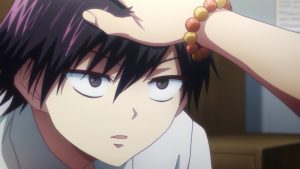 In addition to thematically ambitious this series has also been thematically consistent, and this is a prime example. In effect Ramune-sensei is doing exactly what got all his patients into trouble – he’s denying his true self. The problem is, Momiji and Ayame are not wrong in warning Sensei about the perils of his approach. Heck, even Kuro scolded him over it. Doctors of any stripe really are best-served by keeping some emotional distance, but how can Ramune not be who he is? Empathy is his essential nature, and we’ve seen over and over what happens to people in this mythology who deny their essential nature.
In addition to thematically ambitious this series has also been thematically consistent, and this is a prime example. In effect Ramune-sensei is doing exactly what got all his patients into trouble – he’s denying his true self. The problem is, Momiji and Ayame are not wrong in warning Sensei about the perils of his approach. Heck, even Kuro scolded him over it. Doctors of any stripe really are best-served by keeping some emotional distance, but how can Ramune not be who he is? Empathy is his essential nature, and we’ve seen over and over what happens to people in this mythology who deny their essential nature.
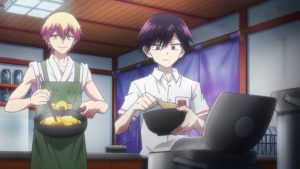 This, of course, is both the fundamental paradox of Sensei’s character, and the reason why Kuropi is the perfect assistant for him. Momiji and Ayame realize this of course, and she tells Sensei as much. It takes a nudge from Shun (the best of all the supporting characters Sensei helped), which is perfectly fitting, but Kuro realizes the path forward. Ramune has to be who he is, and rather than try and change that, Kuro-kun has to be the one who makes sure he navigates that path safely. That works out well, since Kuro loves Sensei as if he was family (and vice-versa) and helping him is also helping himself be happy.
This, of course, is both the fundamental paradox of Sensei’s character, and the reason why Kuropi is the perfect assistant for him. Momiji and Ayame realize this of course, and she tells Sensei as much. It takes a nudge from Shun (the best of all the supporting characters Sensei helped), which is perfectly fitting, but Kuro realizes the path forward. Ramune has to be who he is, and rather than try and change that, Kuro-kun has to be the one who makes sure he navigates that path safely. That works out well, since Kuro loves Sensei as if he was family (and vice-versa) and helping him is also helping himself be happy.
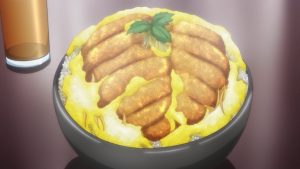 The thank-you party is the perfect way the end things. I have no idea if that’s how the manga concludes (the licensed releases are a ways behind), but Sensei needs to be reminded that there are huge positives to his methods. These are people whose lives he’s given back, and they understand that on a fundamental level. Ultimately when we help others, we help ourselves – that’s the fundamental nature of Karma, the Buddhist tenet that’s very much at the heart of Kai Byoui Ramune. Maybe that’s true and maybe it isn’t, maybe you believe it and maybe you don’t – but it’s the basis for Ramune-sensei’s entire existence.
The thank-you party is the perfect way the end things. I have no idea if that’s how the manga concludes (the licensed releases are a ways behind), but Sensei needs to be reminded that there are huge positives to his methods. These are people whose lives he’s given back, and they understand that on a fundamental level. Ultimately when we help others, we help ourselves – that’s the fundamental nature of Karma, the Buddhist tenet that’s very much at the heart of Kai Byoui Ramune. Maybe that’s true and maybe it isn’t, maybe you believe it and maybe you don’t – but it’s the basis for Ramune-sensei’s entire existence.
 It’s the experience of Kai Byoui Ramune which makes being an anime fan – and writer – worthwhile, really. Greatness where we’re not necessarily expecting it (sleeper pick or no) is eminently rewarding. And this was such a smart and elegantly constructed effort from start to finish, eventually becoming probably the series I most looked forward to every week. You know there are many more hidden gems out there in the manga ranks, and hoping anime will introduce them to us is one of the biggest reasons I keep wading through the oceans of formula and mediocrity every year. Thank goodness for Kai Byoui Ramune, and the hope it gives us that it won’t be the last of its kind.
It’s the experience of Kai Byoui Ramune which makes being an anime fan – and writer – worthwhile, really. Greatness where we’re not necessarily expecting it (sleeper pick or no) is eminently rewarding. And this was such a smart and elegantly constructed effort from start to finish, eventually becoming probably the series I most looked forward to every week. You know there are many more hidden gems out there in the manga ranks, and hoping anime will introduce them to us is one of the biggest reasons I keep wading through the oceans of formula and mediocrity every year. Thank goodness for Kai Byoui Ramune, and the hope it gives us that it won’t be the last of its kind.


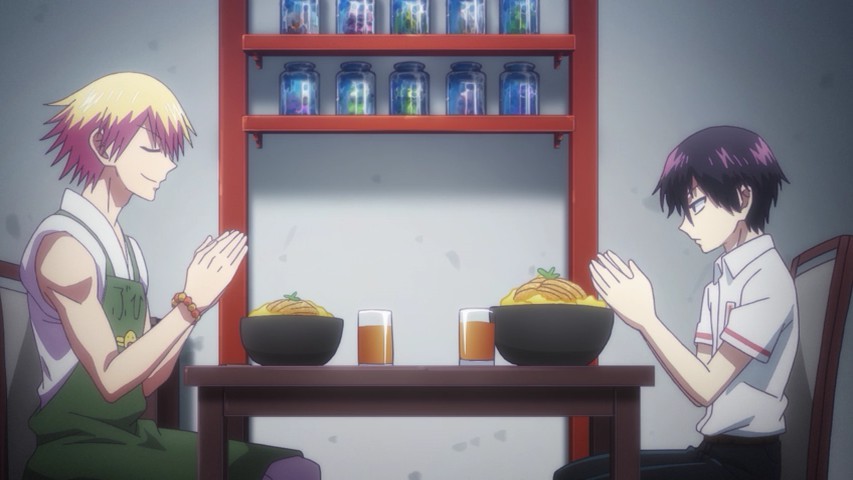




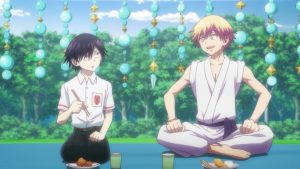


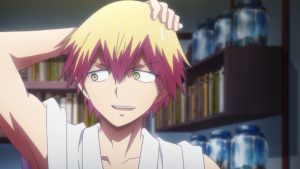

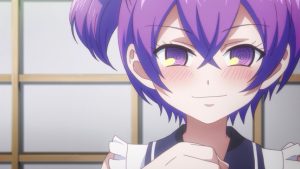
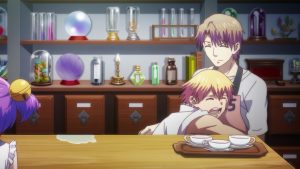
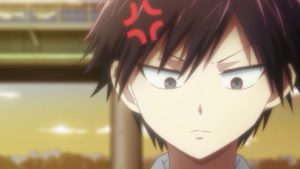
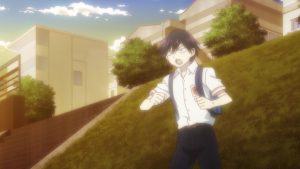

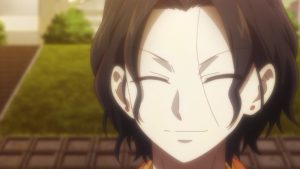
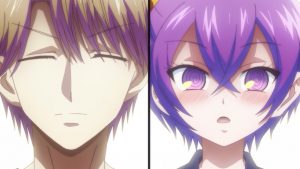



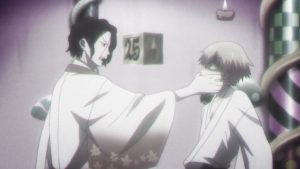


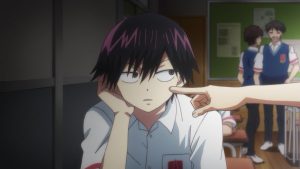


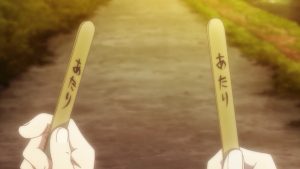
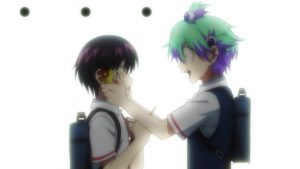
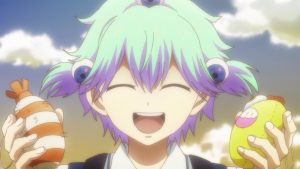

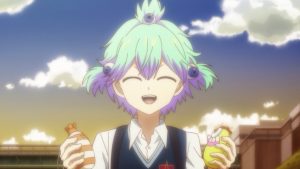
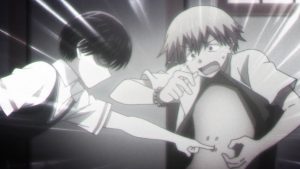
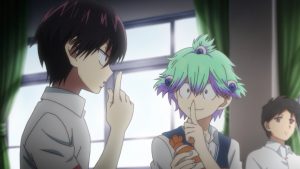
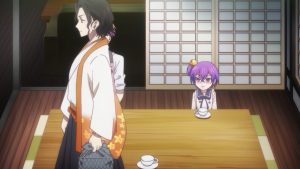
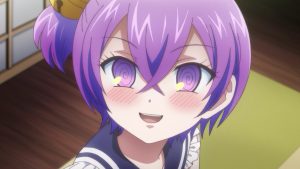
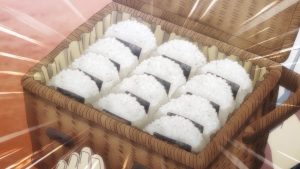
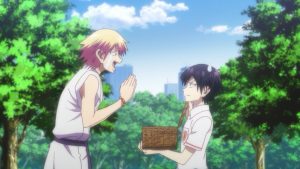
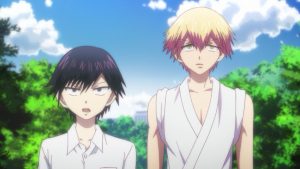
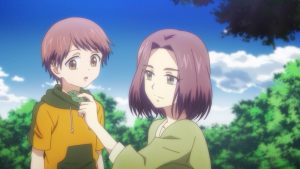
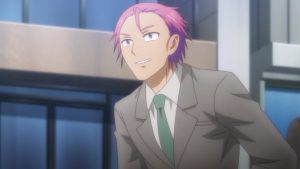

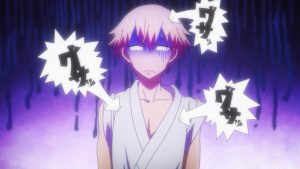



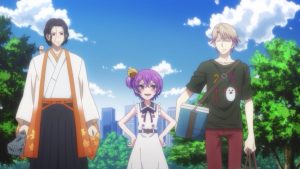


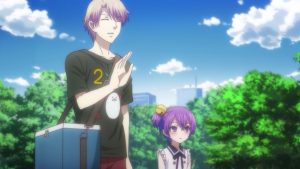


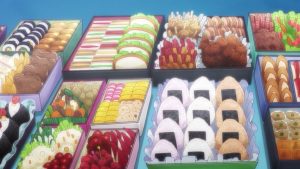


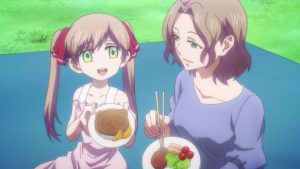

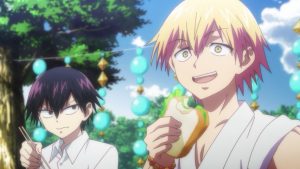

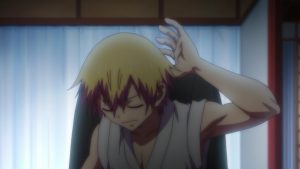
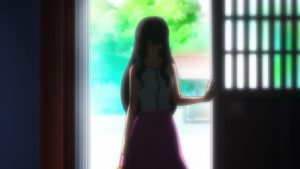
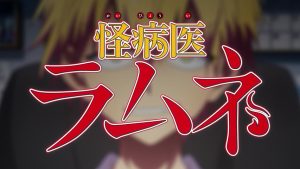

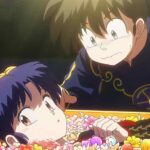
Dop
March 28, 2021 at 7:33 pmI really enjoyed this show. I went into it expecting nothing much more than being at best entertainingly quirky, but never expected it to have this much heart. Ending by having everyone come together to show Ramune-sensei how much he meant to them was an ideal way to end the series.
Collectr
March 28, 2021 at 10:06 pmRamune, Udon no Kuni, and Miira no Kaikata… and Mayonaka no Occult Koumuin, perhaps? These sleepers do have a couple of common factors, including a supernatural or spiritual element treated positively rather than for horror; oddball “families” or teams thrown together by circumstances; characters worth rooting for; an avoidance of shounen tropes. I could put Uchouten Kazouku (first season) in the same circle.
The ending picnic reminded me of the concluding hana-viewing party in Shirokuma Cafe, when all the supporting characters gather under the blossoming sakura trees for the last time (https://1.bp.blogspot.com/-RllIAsE1TWM/VfJygp20cwI/AAAAAAAAABg/WVqevWfFkvo/s1600/shiro_50_2.jpg). It’s a lovely way to say goodbye to favorite characters. But it’s also sad – a portent that there won’t be a sequel – and therefore bittersweet. Still, that’s part of nailing the ending too.
Guardian Enzo
March 29, 2021 at 12:14 amNever having any hope for a sequel makes it a lot less painful when a series ends without one. With something like Kemono Jihen it’s a brutal feeling.
I have plenty of sleepers that don’t have magical realism or fantasy but maybe that is a common trait for shows that are quirky and wistful, which are qualities I certainly do tend to like.
animealex
March 29, 2021 at 12:13 amAhhhhhh, the lounger of nightmares is back! Shun, I love you, but why did you bring this accursed piece of furniture with you???
I of course would’ve liked to see more of the adventures of Ramune-sensei and Kuro, but it is what it is. So thanks for a series which never failed to grip me and left me with so many memorably impressions. The art style (especially when Shun was involved) was something else and I hope I find the OST soon.
Quote of the day: “I doubt anyone lost could show another the way.”
Guardian Enzo
March 29, 2021 at 9:16 amI would love a talk show with Shun as the set designer.
Or a sequel with Kuro and Shun forming a detectives club and solving crimes.
Ivan
March 29, 2021 at 1:30 amI watched this series because you covered and recommended it, and together with Kemono Jihen, it became my favourite of the season 🙂 Fingers crossed for more sleeping little gems!
Princess Usagi
March 30, 2021 at 10:48 amI was kind of expecting Sensei to develop his own mysterious disease when he was not being true to himself in distancing himself from his patients. That would have been an interesting twist, but fortunately for him, he figured out what needed to be done before such a thing could happen. The picnic was a great way to tie up the series in treating the side characters to a friendly reunion, rather than casting them off as mere extras or plot devices that you never see again.